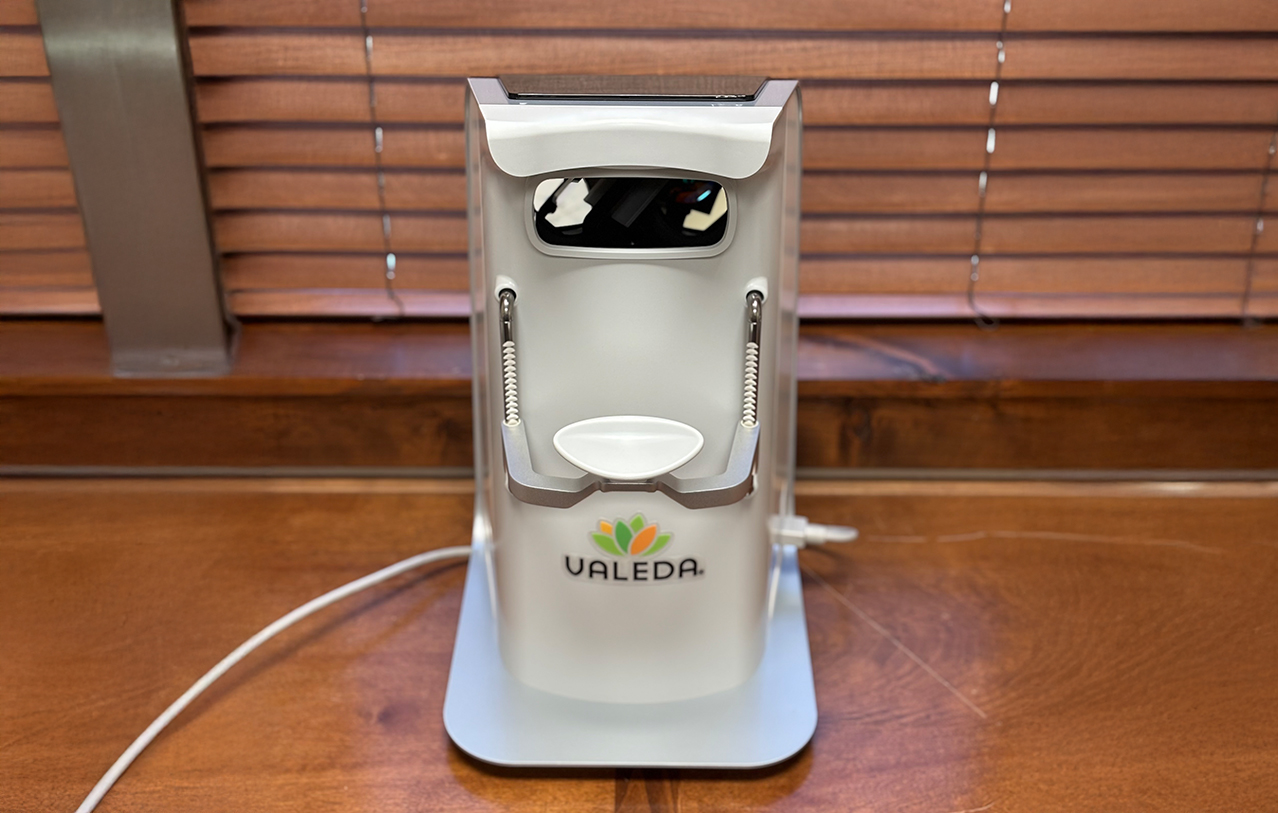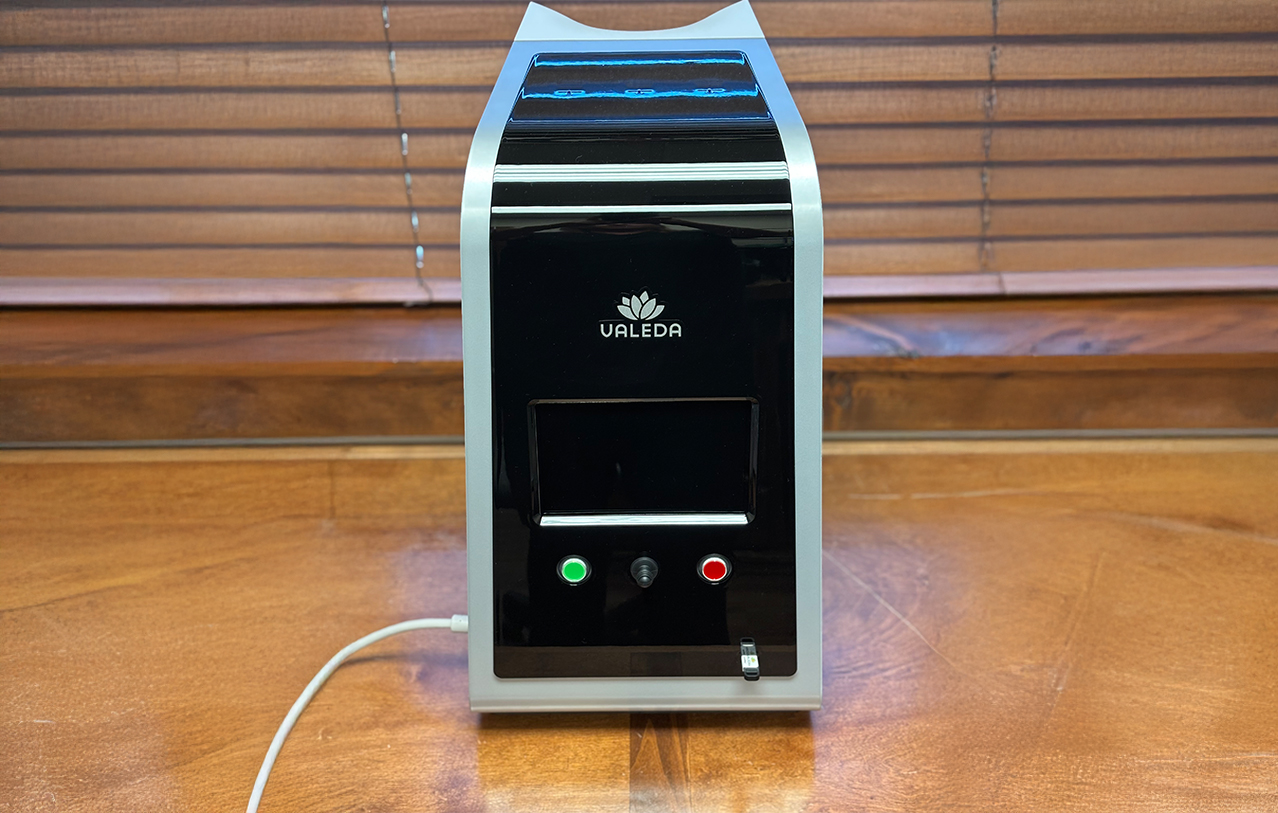W IH 10 Location:
Valeda Light Therapy
What is Valeda?

Valeda is an innovative light therapy that uses precise wavelengths of red and infrared light to enhance the cellular processes involved in dry macular degeneration (AMD). Through photobiomodulation (PBM), Valeda stimulates mitochondrial activity, upregulating energy production, and helps reduce inflammation and cell death. This advanced therapy works to slow the progression of dry AMD, improve vision, and even decrease drusen—the small yellow deposits that build up in the retina.
Benefits of Valeda
Valeda has delivered remarkable results in clinical trials. In the LIGHTSITE III trial, patients who underwent photobiomodulation (PBM) therapy experienced:
Improved visual acuity, with an average gain of more than one line on the eye chart after one and two years of treatment.
Reduced drusen volume, decreasing the macular deposits associated with vision loss.
Slowed progression of geographic atrophy, with significantly fewer cases of this condition in treated patients compared to those receiving a sham treatment.
These clinical findings are an exciting step forward, offering patients with dry macular degeneration (AMD) the ability to improve vision and slow disease progression.
Treatment Details Surgery

Valeda light therapy uses a cutting-edge light delivery system to emit red and infrared light. The treatment is non-invasive, safe, and performed through multiple sessions over a few weeks.
Treatment Schedule: Most patients complete a series of 9 treatment sessions over 3-4 weeks. After the initial series, follow-up treatments can be scheduled every 4 months.
No Pain: Valeda is well-tolerated, with most patients reporting no pain or discomfort during the procedure. There is no dilation. No needles. And no eye lid holders or speculums.
FDA Approval: Valeda is the first FDA-approved device for dry macular degeneration (AMD) and the first treatment specifically for intermediate dry AMD. It represents a groundbreaking advancement for patients with this condition.
Is Valeda Right for you?
Valeda is an excellent option for patients with dry macular degeneration (AMD) who have drusen or non-central geographic atrophy. If you are a candidate most think, the earlier the treatment the better. However, this treatment is not recommended for individuals with wet AMD or for those who have advanced vision loss caused by central georgraphic atrophy.
Valeda Light Therapy FAQs
Who is suitable for the Valeda treatment?
Valeda is indicated for use in the treatment of dry age-related macular degeneration (AMD) patients with vision impairment. Those individuals receiving treatment should have a doctor diagnosis of Dry AMD. The stage of Dry AMD may impact the benefits of the treatment.
Your doctor will discuss your diagnosis and treatment plan with you.Who is NOT suitable for the Valeda treatment?
As mentioned previously, this is not for patients with wet macular degeneration or central geographic atrophy. Also, as a precaution, patients should not be treated with Valeda if they have any known reactions to light exposure, or if they have a history of light-activated central nervous system disorders (e.g., epilepsy, migraine). In addition, patients should not receive treatment within 30 days of using any photosensitizing medications (e.g., topicals, injectables) before consulting with their physician.
What's Involved with the Valeda Treatment? Do I need any special preparation?
The Valeda Light Therapy is a treatment that involves you taking off any glasses or contacts. Next you will be seated comfortably at the Valeda Light Delivery System. The person administering the treatment will guide you through each step of the treatment which takes less than 5 minutes. Your eyes will be open for part of the treatment and closed for part of the treatment. There is no dilation and no eyelid holders/speculums. Treatment for both eyes will take less than 10 minutes.
This is done in the office, so there is no fasting, no IVs, and no real big restrictions after the procedure. Also, each treatment is separated by a minimum of 24hrs.What are the clinical benefits of the Valeda treatment?
Treatment with Valeda could possibly improve overall visual function. This could include improvements in vision when scored on the eyechart and improved detailed vision. Optical coherence tomography imaging, basically an MRI for the eye, also can show improvement in scans of the eye when assessed for drusen.
What are the potential side effects of the Valeda treatment?
Photobiomodulation (PBM) is a low level light based therapy that helps cells improve their function. PBM has been used in many different diseases and disorders for decades with a positive safety profile. In clinical trials in dry AMD patients, the use of light therapy has also been shown to be safe. Valeda is designed to be safe. There have been no treatment-related side effects noted in previous studies with the Valeda.
Clinically we have seen some temporary dryness after the procedure, which artificial tears can help with.What can I expect during and after the Valeda treatment?
During the Valeda light therapy, you will be guided on how to look at the light. It is well known that looking at bright light can produce an afterimage. Another name for this is photobleaching, where the cells that “see” that specific color become fatigued. For example, if you look at a red light, those colors may fade after treatment and you will see more of the opposite color (i.e., green). This phenomenon may be seen immediately following the treatment and will recover in a couple of minutes. Since you are not dilated, you will be able to partake in normal activities following the treatment.What if I have cataracts?
We prefer to do a treatment before cataract surgery if possible. Patients can receive the Valeda treatment then have cataract surgery after. If the cataracts are not ready to be treated, then they can just be monitored after.
Will I be cured if I have the Valeda Light Therapy?
There is no cure for macular degeneration. The goal of the Valeda treatment is to improve the vision or stabilize the vision. However, it is not a one time treatment. Longer-term studies show that vision may decline if treatment is stopped. The encouraging news is that patients who resumed therapy were often able to recover their vision.
Valeda Treatment Locations
San Antonio Valeda Location
23103 IH 10 W, Suite 105
San Antonio, TX 78257Kerrville Valeda Location
708 Hill Country, Suite 100
Kerrville, TX 78208
237 W Water St
Kerrville, TX 78208Fredericksburg Valeda Location
1021 S State Hwy 16
Fredericksburg, TX 78624Uvalde Valeda Location
1038 Garner Field Road
Suite B Uvalde, TX 78801

